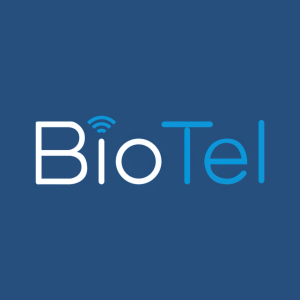HeartBeam Receives Two New US Patents for its Core Cardiac Monitoring Technology
Company Continues Expanding its Intellectual Property Footprint, Now has 14 US and 4 International Patents
“HeartBeam’s core VECG technology is designed to be used with portable, patient-friendly devices such as a credit-card sized system, an extended wear patch, or watch to enable physicians to monitor patients and identify cardiac health trends outside of a medical facility,” said Branislav Vajdic, PhD, CEO and Founder of HeartBeam. “These new patents reinforce our strategic vision which is founded on developing and protecting our novel VECG technology and product pipeline as we work to transform how cardiac care is delivered in the future.”
The first patent, “Mobile three-lead cardiac monitoring device and method for automated diagnostics” covers apparatuses and methods that facilitate the comparison of cardiac signals over time for the automated or assisted detection of heart attacks, or Acute Myocardial Infarction (AMI). For each patient, HeartBeam provides a comparative baseline ECG which aids physicians in gaining richer insights about the patient’s cardiac health. This approach was validated in a landmark JACC: Advances publication which demonstrated that HeartBeam’s VECG approach with a comparative baseline had significantly higher diagnostic accuracy (
The second patent, “Apparatus for generating an electrocardiogram” covers methods and apparatuses around HeartBeam’s wrist-based ECG system. This is the second patent related to HeartBeam’s watch concept, which combines a continuous ECG monitor with the ability to take a high sensitivity 12-lead ECG – all in a single device designed to be worn on the wrist.
In addition to the 14 issued and allowed US patents and 4 international patents, HeartBeam has 20 pending applications worldwide. These patents cover the core inventions in HeartBeam’s VECG technology, as well as the specific applications across HeartBeam’s product portfolio, including patient carried devices (HeartBeam AIMIGo™), continuous monitors (LIVMOR), extended wear patches, and watch-based 12-lead ECGs.
About HeartBeam, Inc.
HeartBeam, Inc. (NASDAQ: BEAT) is a medical technology company that is dedicated to transforming cardiac care through the power of personalized insights. The company’s proprietary vectorelectrocardiography (VECG) technology collects 3D signals of the heart’s electrical activity and converts them into a 12-lead ECG. This platform technology is designed to be used on portable, patient-friendly devices such as a credit-card sized monitor, watch or patch. Physicians will be able to identify cardiac health trends and acute conditions and direct patients to the appropriate care – all outside of a medical facility, thus redefining how cardiac health is managed in the future. For additional information, visit HeartBeam.com.
Forward-Looking Statements
All statements in this release that are not based on historical fact are "forward-looking statements." While management has based any forward-looking statements included in this release on its current expectations, the information on which such expectations were based may change. Forward-looking statements involve inherent risks and uncertainties which could cause actual results to differ materially from those in the forward-looking statements, as a result of various factors including those risks and uncertainties described in the Risk Factors and in Management’s Discussion and Analysis of Financial Condition and Results of Operations sections of our Forms 10-K, 10-Q and other reports filed with the SEC and available at www.sec.gov. We urge you to consider those risks and uncertainties in evaluating our forward-looking statements. We caution readers not to place undue reliance upon any such forward-looking statements, which speak only as of the date made. Except as otherwise required by the federal securities laws, we disclaim any obligation or undertaking to publicly release any updates or revisions to any forward-looking statement contained herein (or elsewhere) to reflect any change in our expectations with regard thereto or any change in events, conditions or circumstances on which any such statement is based.
View source version on businesswire.com: https://www.businesswire.com/news/home/20240307488461/en/
Investor Relations Contact:
Chris Tyson
Executive Vice President
MZ North America
Direct: 949-491-8235
BEAT@mzgroup.us
www.mzgroup.us
Media Contact:
media@heartbeam.com
Source: HeartBeam, Inc.







